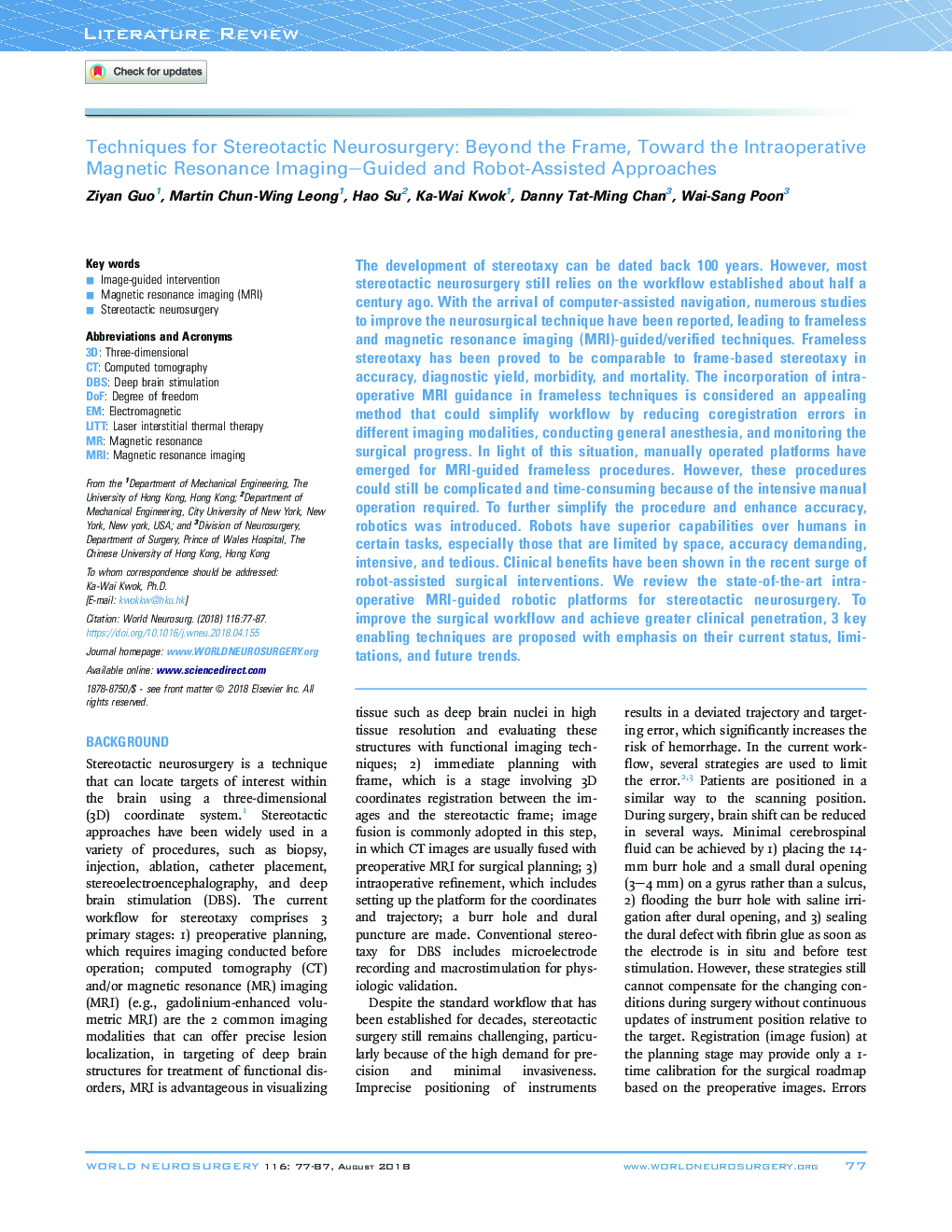| Article ID | Journal | Published Year | Pages | File Type |
|---|---|---|---|---|
| 8691381 | World Neurosurgery | 2018 | 11 Pages |
Abstract
The development of stereotaxy can be dated back 100 years. However, most stereotactic neurosurgery still relies on the workflow established about half a century ago. With the arrival of computer-assisted navigation, numerous studies to improve the neurosurgical technique have been reported, leading to frameless and magnetic resonance imaging (MRI)-guided/verified techniques. Frameless stereotaxy has been proved to be comparable to frame-based stereotaxy in accuracy, diagnostic yield, morbidity, and mortality. The incorporation of intraoperative MRI guidance in frameless techniques is considered an appealing method that could simplify workflow by reducing coregistration errors in different imaging modalities, conducting general anesthesia, and monitoring the surgical progress. In light of this situation, manually operated platforms have emerged for MRI-guided frameless procedures. However, these procedures could still be complicated and time-consuming because of the intensive manual operation required. To further simplify the procedure and enhance accuracy, robotics was introduced. Robots have superior capabilities over humans in certain tasks, especially those that are limited by space, accuracy demanding, intensive, and tedious. Clinical benefits have been shown in the recent surge of robot-assisted surgical interventions. We review the state-of-the-art intraoperative MRI-guided robotic platforms for stereotactic neurosurgery. To improve the surgical workflow and achieve greater clinical penetration, 3 key enabling techniques are proposed with emphasis on their current status, limitations, and future trends.
Keywords
Related Topics
Life Sciences
Neuroscience
Neurology
Authors
Ziyan Guo, Martin Chun-Wing Leong, Hao Su, Ka-Wai Kwok, Danny Tat-Ming Chan, Wai-Sang Poon,
